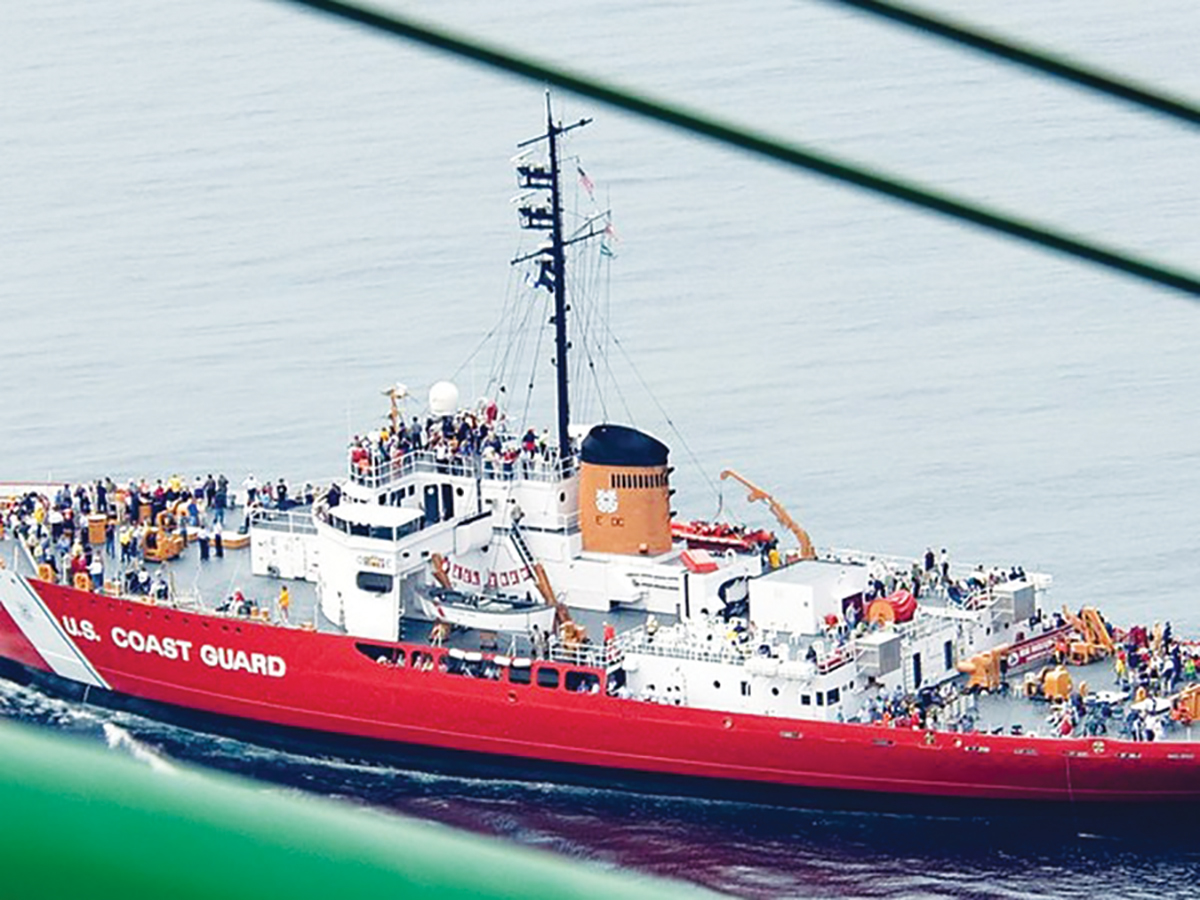WRITER | NICOLETTE CHAMBERY
PHOTO | ICEBREAKER MACKINAW MARITIME MUSEUM
A Timeless Relic of WWII
Today’s technology affords us brief and accurate glimpses at history without always allowing an opportunity to dig into the stories, the challenges, and the triumphs of those who fought on our behalf and whose efforts contribute to our prosperity still today. On social media platforms you can retrace images and statistics that encapsulate the experiences of those who’ve gone before us, but what about the decisions that led up to their successes? What did it feel like to be a part of it, and how was it hard?
Built in Toledo, Ohio in 1943 at a cost of 10 million dollars, Icebreaker Mackinaw was officially ready to set sail on December 30, 1944. The ship was originally commissioned by the US Coast Guard to carry needed wartime supplies such as copper and iron ore from the Upper Peninsula to factories in the lower surrounding states.
As the largest icebreaker on the Great Lakes, the Mackinaw was one of the few vessels able to withstand winter conditions on the Great Lakes and, more importantly, clear the way for these critical commodities to reach their destinations. After 62 years breaking up Great Lakes ice, she was decommissioned in 2006 and replaced by a ship that was more technologically sophisticated, but she earned her place in history.
Icebreaker Mackinaw is one of only three ships that provided such service for the US Coast Guard that is still maintained. She’s now docked at Mackinaw City’s Icebreaker Mackinaw Maritime Museum, where she attracts more than 20,000 guests each season from May to October and serves as a goodwill ambassador throughout the region. Visitors can tour the Mess Deck, Captain’s Quarters, Bridge, Engine Room, Ward Room, Sick Bay, and a “Ship’s Store,” which has an array of nautical, military, and dedicated “Mackinaw” items to choose from. Overnight encampments and other group events are also available.
There wasn’t a lot of time between the decision to move the Mackinaw and her arrival at the tip of the mitt, but there were many things that needed to be done to transform her from active to civilian duty. “For example,” explains Museum Executive Director Lisa Pallagi, “all the grey water — any fuel, shower or laundry water — needed to be removed from the ship. And at 290 feet in length, a great deal of effort had to go into preparing the docks to hold her steady as well.”
Pallalgi has a background in business management and spent most of her career in the maritime field working on corporate yachts and marinas.
“When I found out about the Mackinaw, I thought it might be a great way to combine my business skills with the knowledge I had gained on the water, so I applied.” Shortly after the ship was opened to the public, the group spearheading the transformation process asked Pallagi to come on board as the operations manager, and in 2014 she was promoted to Executive Director.
“Every day I enjoy what I do. The feeling I get when I walk down the dock to my office is wonderful. The significance of this work is rooted in preserving history, and there’s not been anything quite like the Icebreaker since.”
Part of Pallagi’s work is maintaining the Mackinaw financially while keeping it accessible to the public. Eventually, she hopes to purchase a simulator so people can see and hear what it would have been like to have manned the ship during its war days.
USCGC Mackinaw
Mackinaw City
TheMackinaw.org








